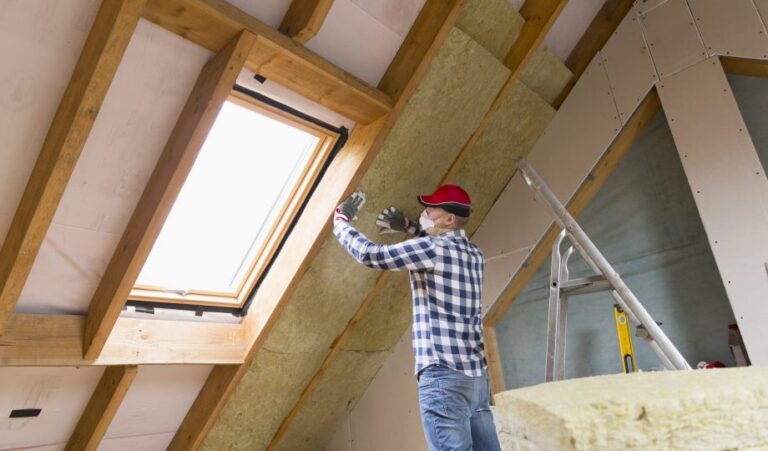Growing the market for low-carbon building materials

The UK construction sector is facing a major challenge. How does the sector tackle a growing housing shortage and expand infrastructure services while also achieving emissions reductions in line with the government targets of a 50% reduction from the built environment by 2025? Meeting this challenge will require – amongst other things – a rapid decrease in the use of carbon-intensive building materials in the next few years, and an increase in low-carbon alternatives. Building materials account for roughly 19% of the UK’s total greenhouse gas emissions.[1] Of these, the majority come from steel and cement.
Luckily lots of research is happening and a growing range of alternative building material is now available. Alternatives to traditional cement and concrete include blended cements and concretes, concretes that store CO2, cements made from alternative materials, and using entirely different materials, such as wood, hempcrete, straw bales and mycelium.
But very few of these materials are actually used on construction sites today. Chatham House recently published a report on innovation in low-carbon cement and concrete, finding that while there has been lots of R&D, very few low carbon cements have been commercialised and none have been applied at scale.
One of the key barriers holding these materials back is the lack of demand. Clients, architects, engineers and contractors are often cautious about using novel building materials, perceiving them as too risky, more costly and more difficult to use. They are wary of changes in a product that has to ensure safety over decades and have a strong preference for a product that is easy to use in most applications without additional training. Finally, they are subject to financial, insurance and legal constraints that shape how innovative they can be.
There are three near-term opportunities to overcome these barriers:
- Major consumers of building materials can restructure their procurement processes to factor in embodied carbon. The UK government accounts for roughly 40% of total construction spending per year[2] and has already set ambitious requirements for key infrastructure projects.[3] The real test is whether the government starts to commit to ambitious targets for new housing projects, which could trigger profound changes in the market. In the Netherlands, a new public procurement tool has already helped grow demand for low-carbon materials among local authorities and housing corporations.[4] There is also huge potential for major developers to adopt carbon-intensity targets for their projects. Policymakers should also work with insurers to confirm that clients who specify novel materials are not constrained by unnecessarily high insurance rates.
- The government can target whole-life-cycle carbon assessments for buildings. We have seen how effectively legislation can change industry approaches: the focus of building regulations on operational efficiency has shifted energy efficiency from a niche consideration to a mainstream one.[5] However, to date there has been little emphasis on embodied carbon. A first step could be to mandate whole-life-cycle carbon assessments for projects over a certain size. This would increase data gathering but to be truly effective it would require a standardized approach to carrying out such assessments. In this regard, the recently launched RICS whole-life carbon assessment guidance represents a huge step in the right direction.
- Consumers can leverage digital shifts happening right now in the construction sector. Remote monitoring, predictive analytics, machine learning and 3D printing are already transforming construction sites, making it easier to work with alternative materials.[6] By putting better information in the hands of consumers, digital technologies could also transform the market for low-carbon building materials. Building information modelling, for example, is allowing design teams to access a larger pool of expertise, test different designs and account for and track embodied carbon.[7]
There are no hard and fast rules in construction. In some contexts using traditional building materials may continue to be the best option. In others, shifting to novel materials will be a no-brainer. It is critical to ensure that procurement models and regulations are not too prescriptive and instead guide consumers towards more sustainable options while letting them select the most appropriate one for a given build, supported by digital technologies in making that decision. Ideally this will allow consumers to match the lowest carbon building materials to their most viable use-cases reserving the higher carbon ones for those few applications where they might still be needed.
Johanna Lehne, Research Associate, Energy, Environment and Resources, Chatham House.
For more UKGBC work on carbon, take a look at our Advancing Net Zero programme.
Make sure to follow the UK Green Building Council on Twitter, LinkedIn, and Facebook.
[1] Building Futures (Undated), Material facts, https://www.hertfordshire.gov.uk/microsites/building-futures/a-sustainable-design-toolkit/technical-modules/materials/material-facts.aspx (accessed 20 Jun. 2018).
[2] Designing Buildings Wiki (2017), ‘Government Construction Strategy 2016 2020’, 7 December 2017, https://www.designingbuildings.co.uk/wiki/Government_Construction_Strategy_2016_2020 (accessed 30 Jan. 2018).
[3] For example, the concrete for London’s Crossrail project must have a minimum cement-replacement content of 50 per cent.
[4] Kemp, R, Bartekova, E., Turkeli, S. (2017), ‘The innovation trajectory of ec0-cement in the Netherlands: A co-evolution analysis’, International Economics and Economic Policy, 14: pp. 409-429, doi: 10.1007/s10368-017-0384-4 (accessed 16 Oct. 2017).
[5] Giesekam, Barrett and Taylor (2015), ‘Construction sector views on low-carbon building materials’.
[6] Embedded sensors are, for example, being used to inform builders when concrete slabs have reached required strength and to track performance of structures after completion. Converge (2017), S. Lambeth Rd., https://www.converge.io/work/lambeth (accessed 20 Jun. 2018).
[7] Skanska has used BIM to calculate carbon footprints for projects and facilitate knowledge exchange between partners in different countries. World Economic Forum and the Boston Consulting Group (2017), Shaping the Future of Construction: Inspiring innovators redefine the industry, https://www.weforum.org/reports/shaping-the-future-of-construction-inspiring-innovators-redefine-the-industry (accessed 12 Mar. 2017).
Related
Storms, climate change and how we make our cities resilient

Sustainable Construction for the Sustainable Development Goals

Fixing the Competency Gap: Moving Beyond Qualifications in Domestic Retrofit

UKGBC Members visit Coal House in Cardiff

